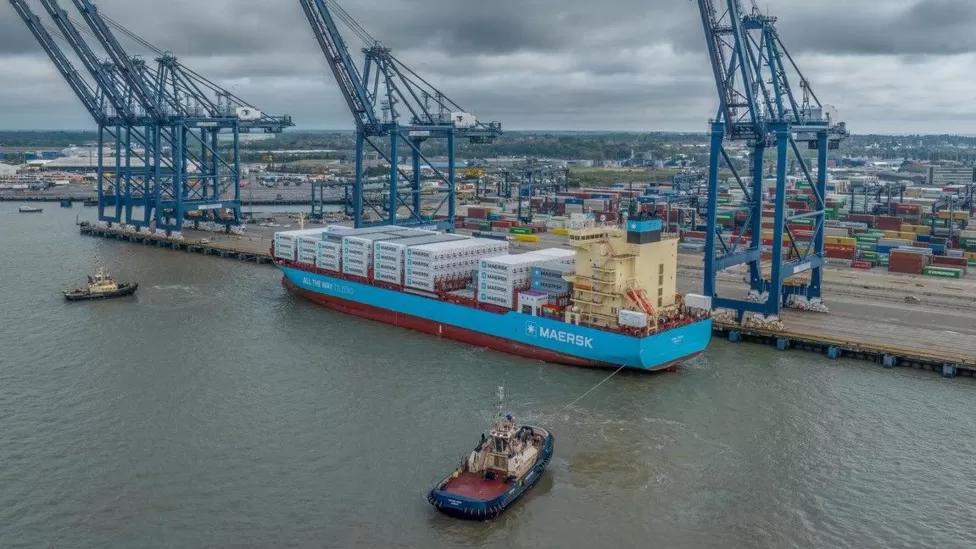Powered by methanol made of gas from landfill, the "Laura Maersk" is a major step towards net-zero shipping
We have reported with surprising regularity on shipping - probably driven by the fact that a small but significant proportion of carbon emissions comes from shipping over intercontinental distances. As the BBC reports:
Highly polluting fuels from container ships contribute as much as 3% of the world's global carbon dioxide emissions, according to the UK Parliamentary Office of Science and Technology.
In 2022, a report by that office showed that 95% of UK trade was transported by ship.
It warned that without "rapid action to decarbonise the sector" greenhouse gas emissions from global shipping were likely to increase over the next decade.
Wrong direction. So it was a delight, at the end of last month, when the world’s first container ship powered by methanol, docked at Felixstowe - the Laura Maersk. .Again from the BBC:
Launched this year, the Danish vessel has been described as an "historic milestone" for global shipping due to its greener credentials.
Its engine can be powered by methanol, a non-persistent chemical that is broken down in the environment. The clear, flammable liquid has been used in some racing cars.
Maersk, the logistics company which owns the vessel, has set itself a target of achieving net-zero greenhouse gas emissions by 2040.
Last year it ordered 12 methanol-enabled ships, each costing $175m (£130m) and capable of carrying 16,000 containers.
The firm said it planned to source its methanol from a US-based facility which captures biogas from decomposing organic waste in landfill sites.
We have previously reported on wind-and-hydrogen powered shipping experiments. We checked up on the company at the core of that report, Smart Green Shipping, to see how they are developing.
They have refined their product offer to something called a FastRig - which is a digitally controlled retractable sail-blade, fixable to container ships, that promise to provide enough thrust to contribute to net-zero targets. The Scottish company’s about page is here, and below is a video simulation of how the blade could work and be affixed:

